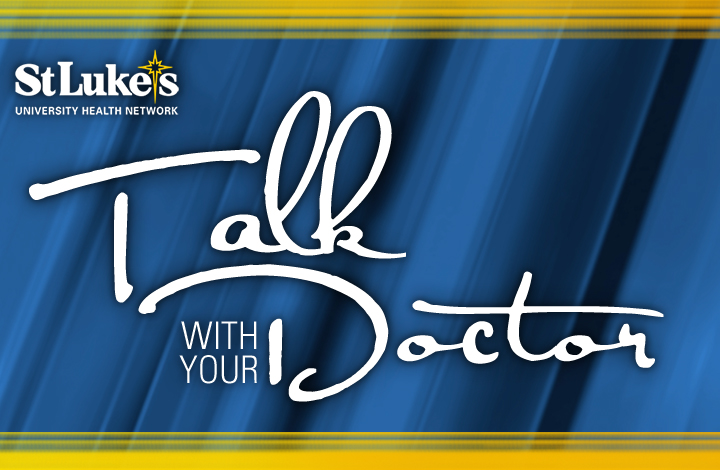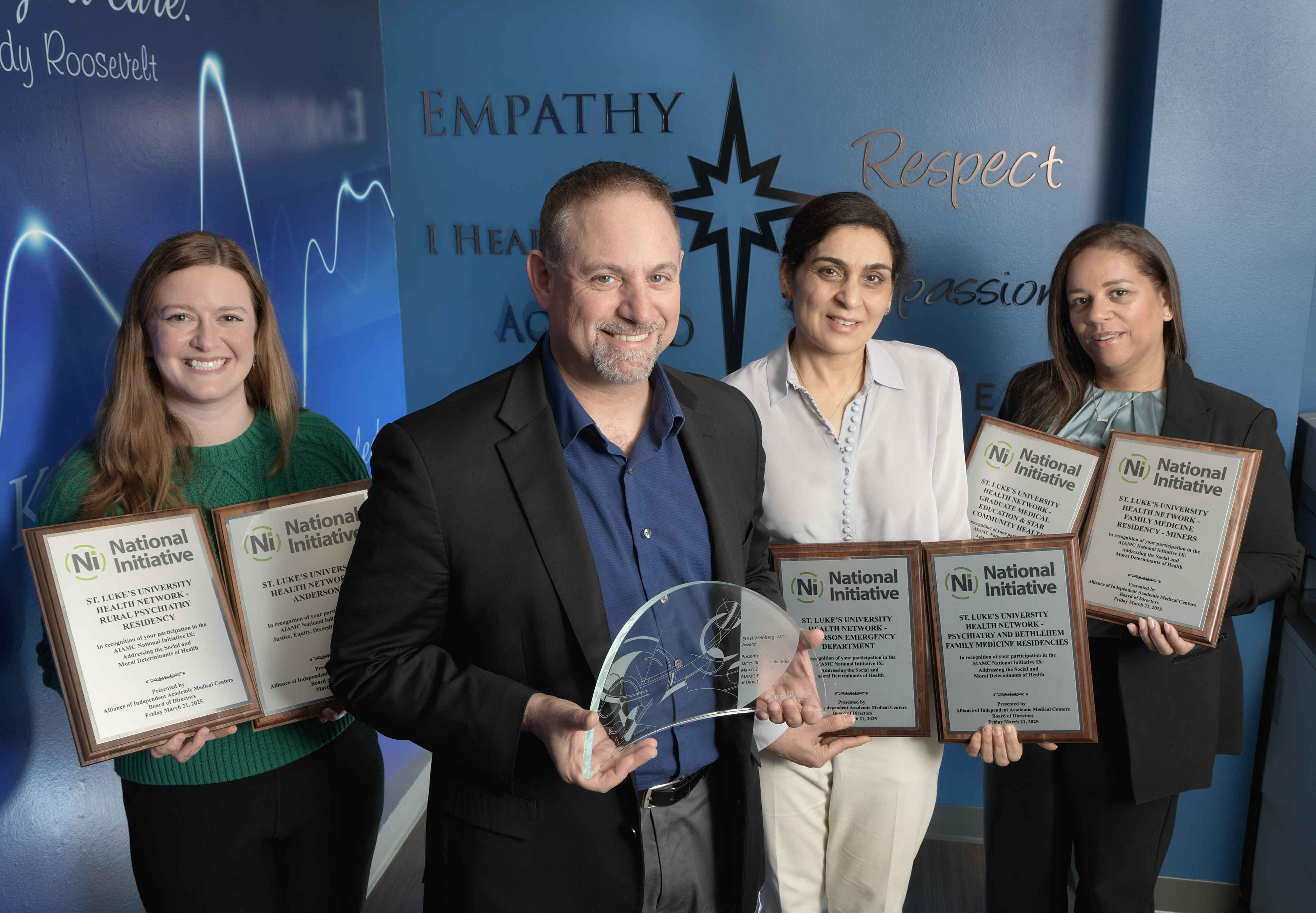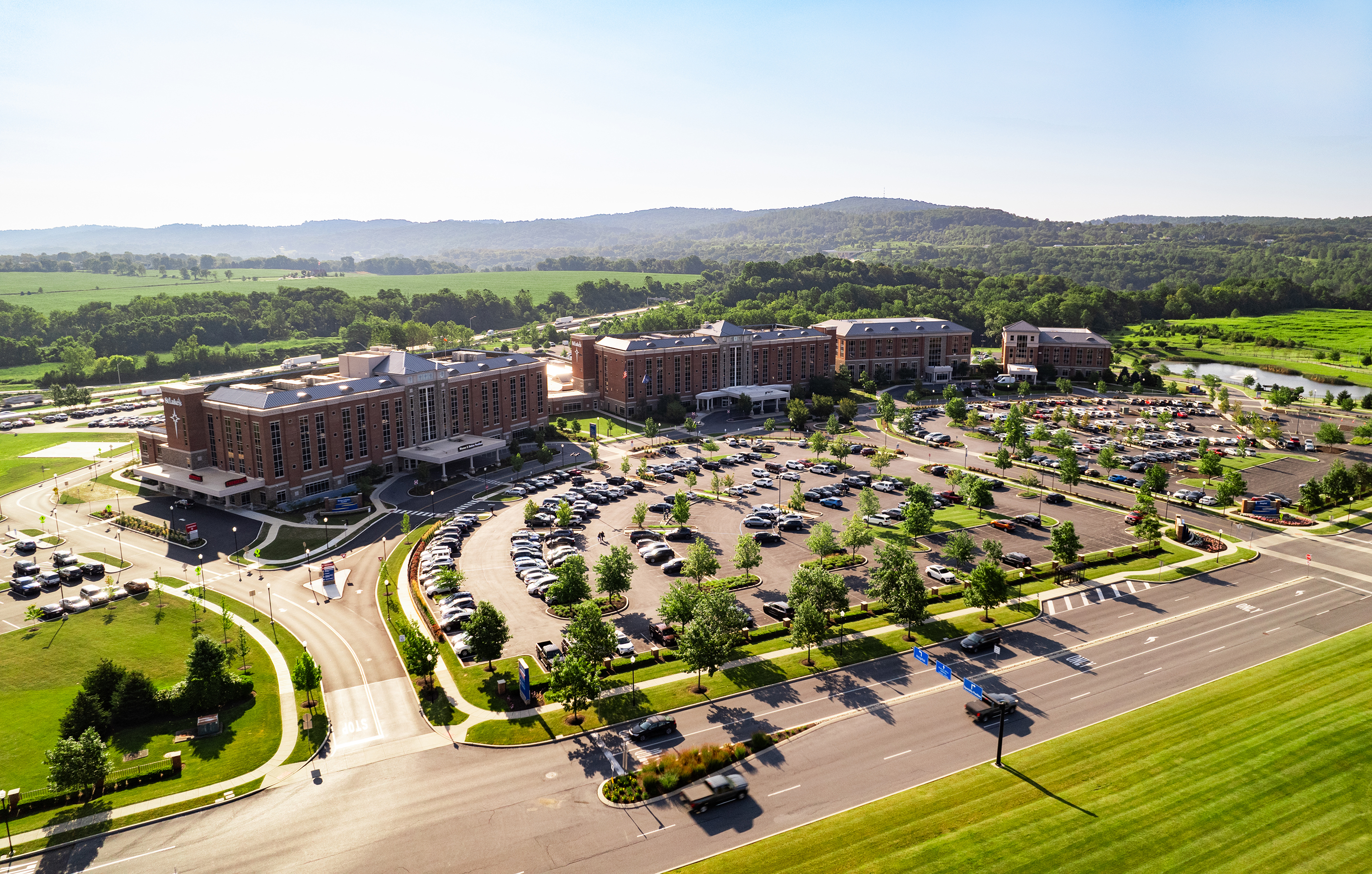St. Luke’s Eliminates Brain Tumors with Breakthrough Laser Treatment
September 16, 2016
St. Luke’s Eliminates Brain Tumors with Breakthrough Laser Treatment
Bethlehem, PA (9/16/2016) - St. Luke’s University Health Network is the first in the region to offer a new laser procedure that uses minimally invasive MRI-guided laser technology to target and destroy cancerous brain tumors.
Visualase®, an MRI-guided laser ablation system by Medtronic, enables neurosurgeons to deliver laser energy though a hole with a diameter approximately the size of a coffee stirrer. The precision of the technology, also known as laser interstitial thermal therapy (LITT), allows the laser to destroy the tumor while minimizing harm to surrounding tissue.
Neurosurgeon Hugh Moulding, MD, PhD, and patient Angela Thomas. Dr. Moulding used breakthrough MRI-guided laser technology to target and destroy a cancerous tumor in Angela’s brain.
“MRI-guided laser ablation is often the best hope for patients due to the lesion’s location or because the patient has already exhausted other treatment options,” he says. “For example, radiosurgery, a type of radiation therapy, is an effective treatment of brain lesions, however, using radiosurgery to treat a recurring tumor greatly increases the risk of complications from radiation.”
Dr. Moulding recently recommended the procedure to Angela Thomas, a 48-year-old wife and mother of two teenagers. Angela was diagnosed with melanoma, and then brain cancer, about two years ago. Consequently, she has received various types of cancer treatments. When a tumor previously treated with radiosurgery began to regrow, Dr. Moulding scheduled the laser ablation procedure. She received the treatment on May 26 at St. Luke’s University Hospital in Bethlehem.
“I didn’t know exactly what to expect, but the treatment went very well,” says Angela, who lives in Forksville, Sullivan County, about three hours north of Easton. “It was much simpler than I expected.”
To prepare a patient for the treatment, Dr. Moulding drills a small hole in the skull. Then, the laser applicator and cooling catheter are precisely placed into the tumor. The patient is then taken to the MRI suite to confirm placement of the laser. As a safeguard, Dr. Moulding delivers a low power test pulse. During the treatment, the laser power is increased and while the laser is activated, special MRI images are converted to thermal maps and damage zone estimates. These provide Dr. Moulding with precise feedback in real time. He uses these to manage the laser’s delivery of light energy to the target area as the tumor is heated and destroyed.
Immediately after therapy, Dr. Moulding reviews additional MRI images to verify that the treated area matched the patient’s surgical goal.
“Due to the minimally invasive nature of the procedure, patients are discharged within a day of their procedure – much sooner than patients who have had traditional, open surgery,” Dr. Moulding says. “Also, laser ablation patients report experiencing fewer side effects than those receiving open surgery.”
In fact, Angela had no side effects. “I didn’t even have a headache,” she says. “My entire family was very anxious before the procedure so the first thing I did after surgery was to call my kids. I face-timed them so they could see that I was fine.”
Also, because the entry level is so small, the procedure leaves little or no noticeable scarring or loss of hair. “The spot healed within two weeks,” Angela says. “I took it easy for three weeks and then I was back to normal.”
Now, Angela, who loves camping, is planning a family trip to upstate New York this summer.
“For two summers now, I have had health issues,” she says “This is the first time in three years that our family gets to enjoy camping together. I can’t wait.”
About St. Luke’s
St. Luke’s University Health Network (SLUHN) is a non-profit, regional, fully integrated, nationally recognized network providing services at six hospitals and more than 200 sites, primarily in Lehigh, Northampton, Carbon, Schuylkill, Bucks, Montgomery, Berks and Monroe counties in Pennsylvania and in Warren County, New Jersey.Media Contact:
Mariella B. Miller
Senior Director, Corporate Communications
St. Luke's University Health Network
484-526-4134
Mariella.Miller@sluhn.org
For more information about St. Luke’s services or to find a physician, call St. Luke’s InfoLink toll-free at
1-866-STLUKES (785-8537) Monday through Friday from 8:30 am to 4:30 pm or email us anytime at Info.Link@sluhn.org. Read More News
Latest News


April 10, 2025
National Recognition for SLUHN Graduate Medical Education

April 09, 2025
In Safe Hands Award

April 08, 2025